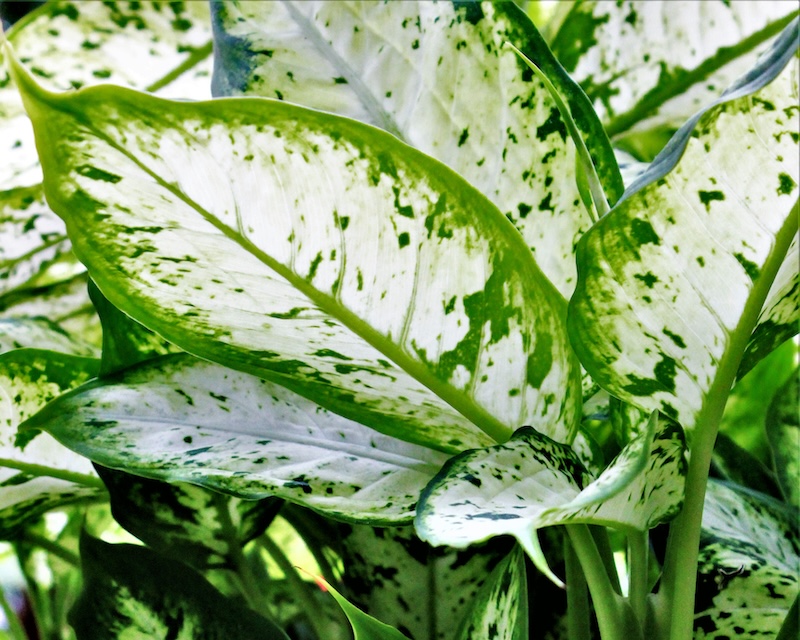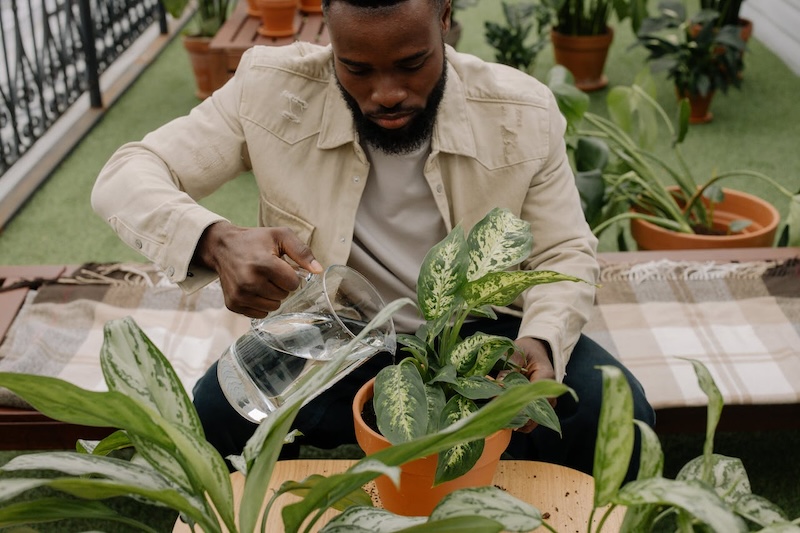Dieffenbachia is one of the more common houseplants and it is easy to grow in a pot for many years. Growing in pots requires a gardener to set up watering and feeding schedules to maintain healthy growing conditions. Regular watering leaches nutrients from potting medium more quickly than from garden soil, where outdoor plants can spread in search of moisture or nutrients. Read on to learn how to feed your Dieffenbachia for optimal plant health.

Why Fertilize Dieffenbachia
A regular fertilizing program for foliage houseplants like Dieffenbachia encourages vigorous growth and bright foliage coloration. The plant does much of its growing during the longer days of April through August and requires more nutritional support then. Dieffenbachia slows its growth during the shorter days of fall and winter and requires far less fertilizer. Dieffenbachia often develops a spathe-type flower when it grows outdoors, but indoors it rarely blooms no matter how much fertilizer is applied.
How Often To Fertilize Dieffenbachia
Fertilize your Dieffenbachia with a diluted liquid feed formulated for houseplants. It should have a balanced ratio of NPK (e.g. 10-10-10) to support root formation, leaf growth, and color intensity. Do not feed a plant that has dried out or shows signs of stress. Even diluted fertilizer can burn excessively dry roots. If your plant is stressed from being overwatered, wait to resume fertilizing until it has been repotted and shows signs of recovery. Feeding every 2 weeks will provide a steady flow of nutrients for active growth between April and the end of August.

How To Tell If Dieffenbachia Needs Fertilizer
Yellowing and drooping leaves are the most common signs that Dieffenbachia needs feeding. Underdeveloped leaves or a lack of new foliage also indicate the plant is hungry. If the overall growth slows during the active growing season, the plant likely needs more fertilizer. Often a layer of worm castings or organic compost on top of the soil is enough to revive depleted plants, releasing nutrients at every watering.
Best Fertilizer For Dieffenbachia
Choosing the right indoor plant fertilizer is easy. Using an organic and sustainable fertilizer indoors is just as important as using it outdoors on landscape and edible plants. Espoma Indoor! Plant food is a liquid that is easy to use and has a balanced NPK ratio of 2-2-2. Apply it at the manufacturer's recommended strength and frequency during the active growing period of April to September.
Dieffenbachia Fertilizing Tips
Dieffenbachia plants do not require much maintenance to remain vigorous and healthy. Regular fertilizing and watering are the only chores that must be done consistently. Using a diluted liquid feed is the best way to ensure that your houseplants receive a consistent level of nutrients to keep the foliage and overall growth steady.
- Do not apply fertilizer to a stressed or dry plant
- Fertilizer is only required between April and September
- Use a liquid feed at the dose and frequency recommended on the label
- Choose an organic and sustainable fertilizer with a balanced NPK ratio
- Empty any excess runoff from saucers and cache pots as soon as possible after fertilizing
Warnings
-Always wear protective gloves and a face mask when handling chemical fertilizers.
-Closely follow all directions and storage guidelines that are on the fertilizer label..
 |
Author Robbin Small - Published 11-29-2023 |
